Palestinians in Gaza are planning 45 days of protests along the border with Israel leading up to the 70th anniversary of the Nakba, and they fear Israeli troops may open fire. One of the organizers speaks to +972 Magazine about why he believes hundreds of thousands of people will show up, and what message he’d like to send to Israelis.
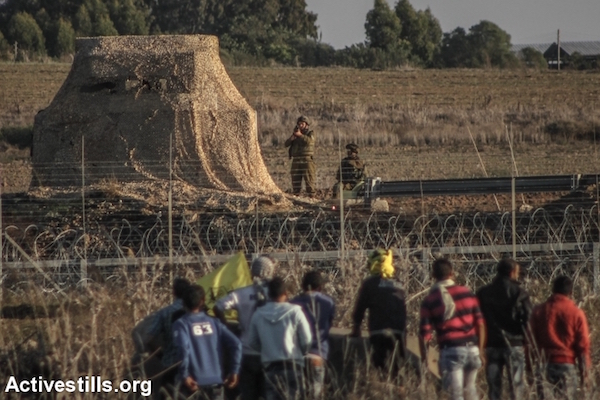
A few minutes before I spoke with Hasan al-Kurd Monday night, Israel’s prime-time nightly news led with story about the march of return al-Kurd and other Palestinian activists in Gaza are planning along the border of the besieged territory this Friday — and how security officials believe their plans to stop the march will result in Palestinian casualties.
The Israeli media has been abuzz for the past several weeks about the march and the army’s plans for stopping tens of thousands of people reaching the border fence. In an oped in Haaretz this week, a former Israeli military spokesperson warned of the optics of “innocent marchers, women, children and men, longing to return to their homes, fired upon by heavily-armed Israeli soldiers.”
According to the Channel 2 broadcast on Monday, Israel’s cabinet has been discussing “out-of-the-box” ideas. One minister proposed “parachuting food and medicine, maybe via drones, deeper into Gaza, and hopefully that will encourage the Palestinian civilians to go toward the food that was dropped from the sky instead of heading to the fence.”
Al-Kurd is amused when I tell him what I’ve just heard on the news. “We anticipated they’d try that,” he says, jokingly. We laugh, and say that maybe they should plan more marches and initiatives along the Gaza border — to convince Israel to ease the siege and relieve some of the suffering in Gaza.
Al-Kurd, a 43-year-old school teacher and father of six from Gaza, is one of 20 organizers of the planned march, which is actually a 45-day event starting this Friday, Land Day, and culminating on May 15, Nakba Day. Seventy percent of the population of Gaza are refugees, meaning they or their parents or grandparents fled or were expelled from towns, villages, and cities inside the territory that became in Israel in 1948, an event known as the Nakba. They have never been allowed to return.
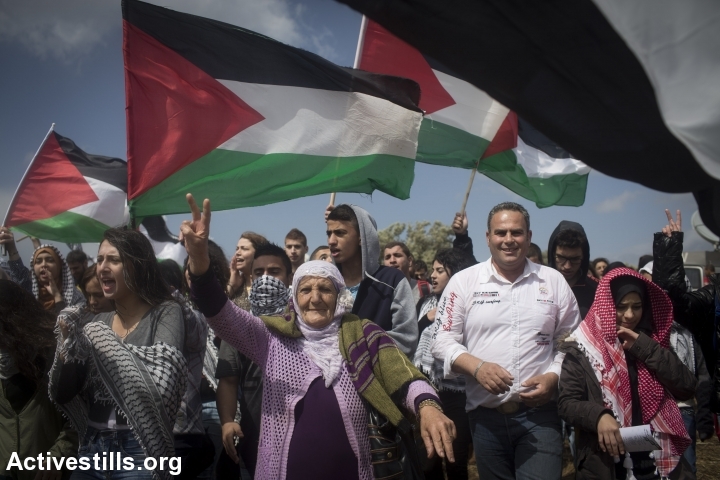
The plan is to set up camps between 700-1000 meters from Israel’s border fence, outside the Israeli army’s unilaterally imposed buffer zone, where anyone who enters is liable to be shot. In the weeks leading up to Nakba Day, there will be marches and bicycle races and other events every week, aiming to draw more attendees along the way. By mid-May, tens or hundreds of thousands are expected to join.
“We’ve been following the Israeli news,” Al-Kurd says. “It’s important for us to know what they write about us so we’ll know what to anticipate when the day comes.”
Organizers are fearful that because the Israeli media is portraying The Great Return March as a Hamas-organized event, and considering the increasing number of border incidents in recent weeks, that the Israeli army will mete out deadly force on their nonviolent initiative.
What exactly are you planning to achieve this Friday?
“We will start the march of return on March 30, but the idea is to keep going, and gather more and more people. Within one week, we’re hoping to have at least 50,000 people close to the border. After that, we will advance 100 meters closer to the border.”
As we speak, Al-Kurd reiterates again and again that the protest will be completely nonviolent, contrary to how it is being described in Israeli media.
“We want families. We want to send a message that we want to live in peace — with the Israelis. We’re against stone throwing or even burning tires. We will make sure the protest doesn’t escalate to violence — at least from our end.”
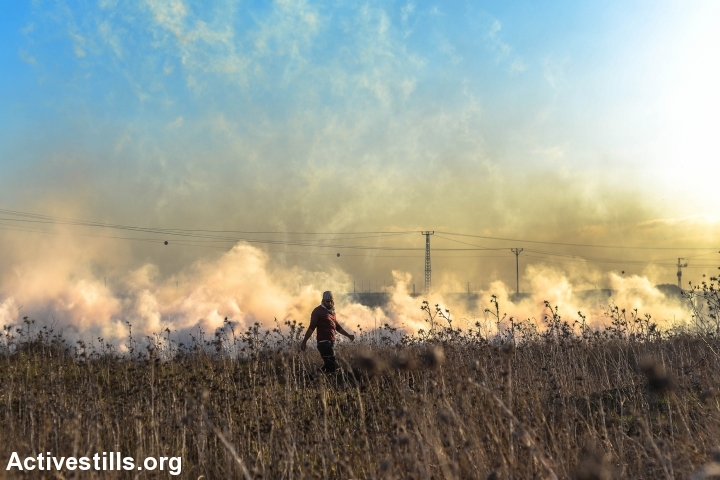
But on the other side, according to Israeli reports, large numbers of soldiers and police forces will be waiting for you.
“We know, and we can’t do anything about that. Our message is peaceful and we’re against violence. If you remember back in 1987, Gaza was packed with Israelis. We want the siege to be lifted and to go back to these days.”
This type of initiative has been tried in the past. In 2011, thousands of Palestinians from Lebanon, Syria, the West Bank and Gaza, and inside Israel marched on the country’s borders. On the Lebanese, Syrian, and Gaza borders, the army responded with gunfire, killing dozens and wounding hundreds. A number of Palestinian citizens of Israel who tried to meet the protesters on the Israeli side of the northern border were arrested.
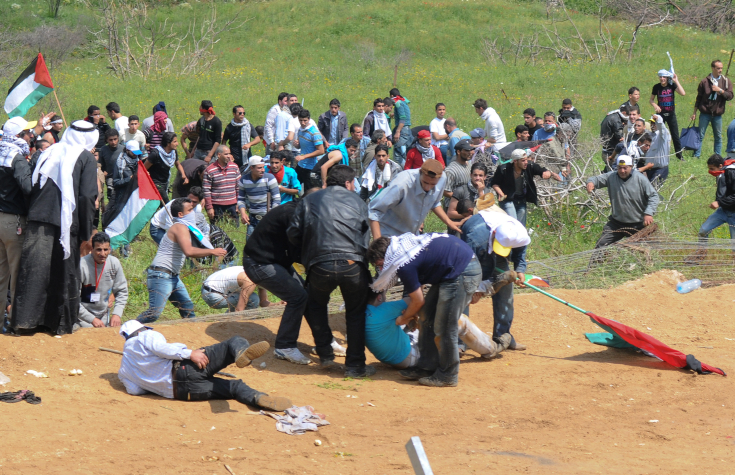
I ask Al-Kurd if they’re ready for the possibility that Israel might again react with disproportionate and deadly force.
“Of course that’s a possibility, unfortunately. But what other options do we have? The situation in Gaza has become unbearable and we absolutely can’t live in Gaza anymore – that’s what prompted us to plan this march and that’s why we anticipate so many people to attend the protest.”
“We’re ready for every possible scenario, even if they start firing at us. Nowadays, to be a Palestinian is to be an almost dead person. Palestinians die every day and we know that’s part of our reality. I was at the Erez checkpoint back in 2011 [during the last return march]; I’ve seen the full force of Israel’s cruelty.”
“The whole idea is based on UN Security Council Resolution 194 (the right of return) and the current unbearable living conditions in Gaza. It is actually a peaceful act. We want to ask the Israelis to welcome as if we were visitors from another country, the same way they welcome refugees in certain countries in Europe — though we’re not actually visitors here.”
What about Hamas? How involved are they in organizing this?
“They’re not. We’re a group of 20 organizers, only two of whom are affiliated with Hamas. Actually, most of us, including myself, are leftists. All the political parties in Palestine are behind us and supporting us, and Hamas — being an elected party — is one of those parties.”
“If we’d felt that [Hamas], or any other party for that matter, tried to control the protest and make it about them, we wouldn’t let them. Hamas is actually very understanding on that point.”
What about the border with Egypt? Why not march there, I ask. The Rafah border crossing, which could ostensibly serve as a lifeline for Gaza, has been kept closed by Egypt nearly year-round for the past decade. The crossing has been opened for only a handful of days so far this year, mostly to allow Palestinians to seek medical treatment in Egypt and those stranded in Egypt to return. In all of 2017, according to the UN, the crossing was open for a mere 36 days; only 2,930 people managed to cross in both directions.
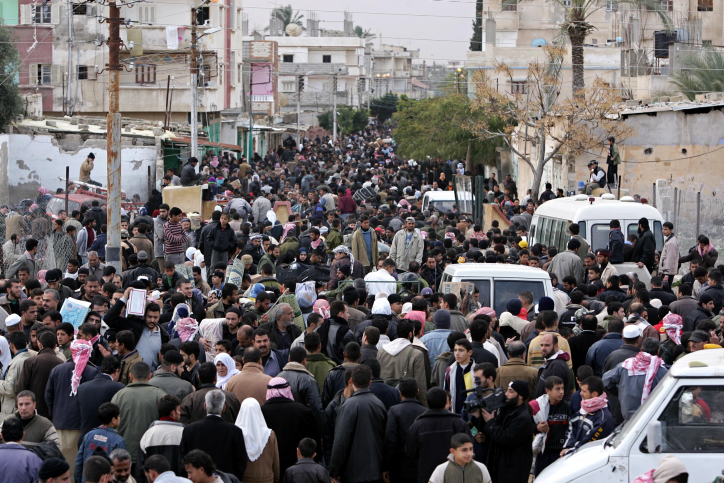
In 2008, after Hamas took control of Gaza and Egypt first shut the border crossing down to regular traffic, Palestinian militants bulldozed open sections of the border wall and hundreds of thousands of people poured through to escape, buy supplies, and effectively break the siege. Eventually Egypt resealed the border.
“You’re right in pointing out that Egypt is a part of the siege, but they’re not occupying us and don’t control every daily aspect of our lives like Israel does. We’re Palestinians, and like I mentioned before, the whole protest is about UNSC Resolution 194 (the right of return for Palestinian refugees), and Egypt has nothing to do with this.”
“The Egyptian economy is bad, and should they open the siege on their end I believe both sides would benefit.”
What about Palestinians who live inside Israel? Are you in touch with them?
“We’re in touch with Palestinian leaders everywhere, including those inside the 1948 borders. We’d like to see our brothers and sisters coming to the border to welcome us — but only as long as they do it safely, not risking themselves and not coming too close to the border so that they don’t end up in clashes with the army. Even if that act is merely symbolic, it will give us a massive mental boost to keep going.”
What about the United States’ involvement? Washington recently made massive cuts to its funding for UNRWA, the Palestinian refugee agency, and Trump’s declaration of Jerusalem as Israel’s capital certainly didn’t help.
“It actually did. The American policy against us makes a lot of people realize that we don’t have much choice but to do this.”
The organizers are hoping to mobilize as many people as they can. Al-Kurd mentions massive numbers, saying they expect half a million people to join them along the border within the first couple of weeks of the protest. I ask him what will happen when they do get the numbers he’s talking to me about.
“We want to bring a million Gazans to the border by May 15th. That would be a massive success.”
And then what?
“Israel will have two options. Either they end the siege or they start negotiations – direct or indirect, it doesn’t really matter, as long as we get a chance to live in dignity and there is relief for the pain and suffering of everyone here in Gaza.”
Is there a message you’d like to convey to the Israeli public?
“Yes. We are reaching out to them, holding an olive branch. It’s true that we’ve suffered in the past but we’re willing to put everything behind us. Let’s turn a new page together and do what’s right.
“Right now, our situation is very similar to a couple who’s separated — neither married nor divorced. That’s Gaza. So either Israel decides to let us go and end the occupation, or we remarry and have a fresh start”

